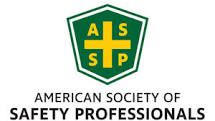OSHA Releases Information on Top 10 Most Frequently Cited Standards for FY 2020
Top 10 Most Frequently Cited Standards for FY 2020
OSHA has revealed its annual list of Top 10 Most Frequently Cited Standards.
After months of delay, the Occupational Health & Safety Administration has revealed the Top 10 Most Frequently Cited Standards for Fiscal Year 2020.
Although all of the standards that were previously found on the list in 2019 stayed on the list in 2020, there were some that moved positions in the list. Ladders climbed from spot number six to number five and Respiratory Protection rose to the third-place spot from number five.
Notable, however, is that Fall Protection is OSHA’s most frequently cited standard for the 10th straight fiscal year.
The Top 10 were revealed during a webinar with Safety + Health magazine, where Patrick Kapust, deputy director of OSHA’s Directorate of Enforcement Programs, presented the preliminary data.
The Top 10 for FY 2020 are:
- Fall Protection – General Requirements (1926.501): 5,424 violations
- Hazard Communication (1910.1200): 3,199
- Respiratory Protection (1910.134): 2,649
- Scaffolding (1926.451): 2,538
- Ladders (1926.1053): 2,129
- Lockout/Tagout (1910.147): 2,065
- Powered Industrial Trucks (1910.178): 1,932
- Fall Protection – Training Requirements (1926.503): 1,621
- Personal Protective and Life Saving Equipment – Eye and Face Protection (1926.102): 1,369
- Machine Guarding (1910.212): 1,313
Source: https://ohsonline.com/articles/2021/03/04/osha-releases-information-on-top-10-most-frequently-cited-standards-for-fy-2020.aspx
You might also like






